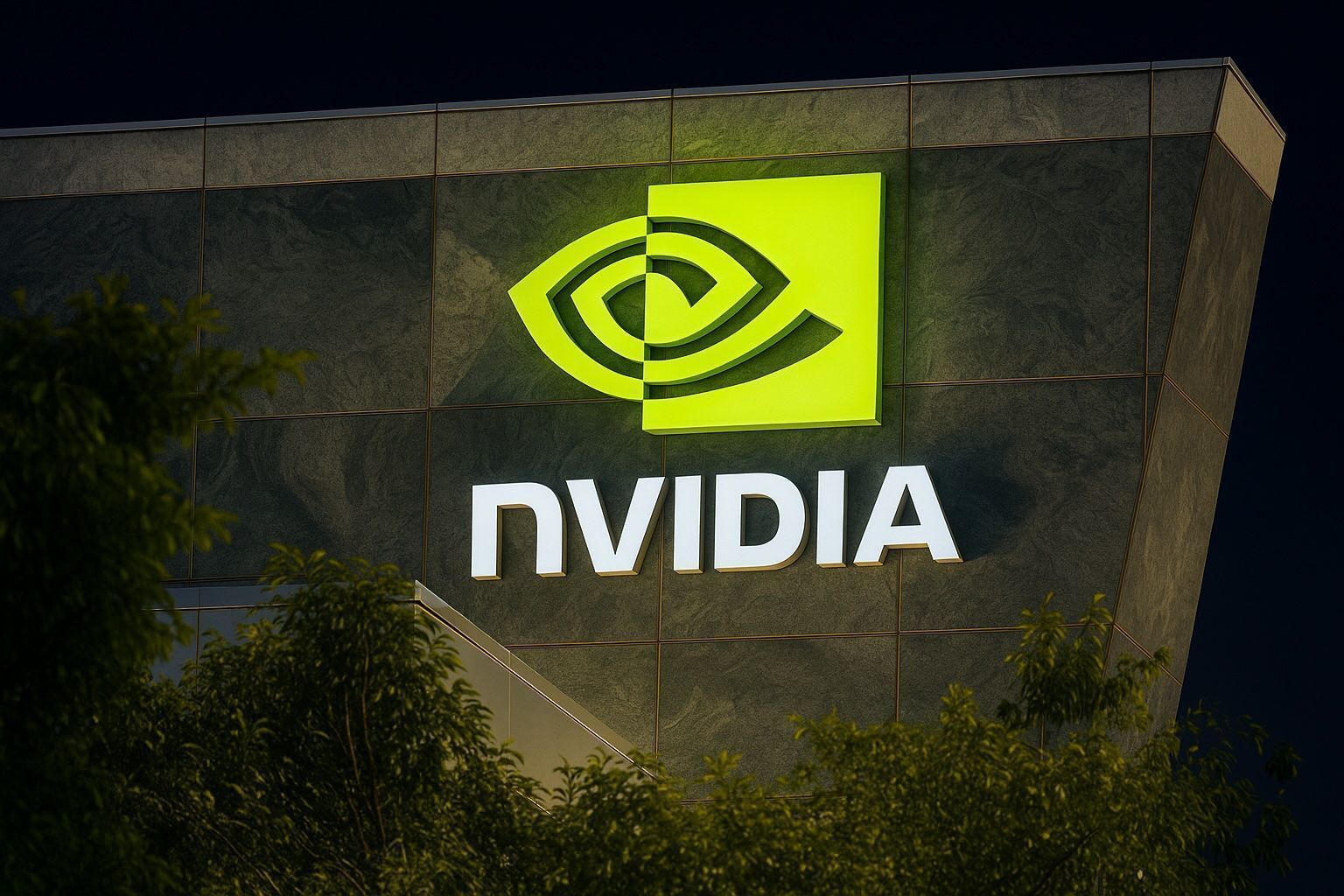Updated Nov. 5, 2025, 19:49 UTC
Key takeaways
- Policy overhangs dominate the tape. Beijing issued guidance barring foreign AI chips from state‑funded data centers, a move that could restrict Nvidia’s China exposure and support domestic rivals; Washington separately reiterated it won’t allow sales of Nvidia’s most advanced “Blackwell” chips to China “at this time.” [1]
- Stock steadies after AI-led wobble. NVDA bounced today after Tuesday’s sector selloff that left marquee AI names lower; investors framed the pullback as profit‑taking rather than a trend break. [2]
- New strategic footprint in India. Nvidia joined the India Deep Tech Alliance, which announced $850 million in new commitments to back local deep‑tech startups; Nvidia will provide technical guidance and policy input. [3]
- CEO message: “not a bubble.” Speaking in London today, Jensen Huang said the AI build‑out is in its early innings, pushing back on bubble claims. [4]
- Catalyst ahead: Nvidia reports fiscal Q3 FY26 on Nov. 19, 2025 (after market), an event closely watched for demand, supply, and China color. [5]
What moved NVDA on Nov. 5
1) China’s new restrictions on AI chips
Reuters reported today that Chinese regulators have ordered state‑funded data center projects to use only domestically made AI chips. Projects under 30% completion must remove foreign chips or cancel plans to use them; more advanced builds will be reviewed case‑by‑case. While the directive strengthens local suppliers (e.g., Huawei, Cambricon), it raises uncertainty for foreign vendors like Nvidia—even as developers have favored Nvidia’s software ecosystem. [6]
Implication: China has been a diminished but still strategic market for Nvidia’s data‑center products. Today’s guidance, if broadly applied, could further limit medium‑term shipments into state‑linked infrastructure and complicate any prospective resumption of high‑end sales.
2) U.S. stance on “Blackwell” exports
A White House spokesperson said Tuesday the administration does not plan to allow Nvidia’s most advanced AI chip, “Blackwell,” to be sold to China “at this time,” echoing the President’s recent comments. The statement clarifies near‑term export policy after months of speculation about possible scaled‑down variants. [7]
Implication: The U.S. position reinforces a ceiling on premium‑tier shipments to China, even as demand elsewhere remains intense. Investors will look for management’s updated revenue mix and mitigation strategies on the Nov. 19 call.
3) Sector context: AI shares wobble, then stabilize
Global markets saw sharp AI‑led declines into Wednesday before stabilizing; strategists characterized the drop as positioning‑driven profit‑taking after a powerful run. Nvidia fell nearly 4% on Tuesday and was about 7% below last month’s peak before today’s rebound. [8]
Implication: The trend remains intact for now, but volatility around policy headlines and capex cycles (cloud, enterprise, and sovereign AI) is elevated.
4) India deep‑tech initiative gains momentum
Nvidia joined the India Deep Tech Alliance as it announced $850 million in fresh capital commitments from new members (e.g., Qualcomm Ventures, Activate AI). Nvidia’s role includes technical guidance, training, and policy input to accelerate adoption of its AI and computing tools across India’s deep‑tech ecosystem. [9]
Implication: This expands Nvidia’s developer and startup footprint in a priority market, potentially broadening long‑term demand for its platforms (compute, networking, software).
5) CEO tone check: “We’re at the start of a long build‑out”
In an interview outside Downing Street, Jensen Huang rebutted claims of an AI bubble, saying the industry is in the early phase of a multi‑year infrastructure build‑out and arguing that AI is already proving economically productive. [10]
Implication: Management’s messaging remains constructive heading into earnings, reinforcing the secular demand thesis (training, inference, and emerging “physical AI” workloads).
Today’s price action & levels to watch
- Intraday: NVDA traded between $195.55 and $202.89, opening at $198.69 and recently near $201 on heavy volume. The recovery suggests dip‑buyers are active ahead of earnings despite policy headwinds. (See live chart above.)
- Context: With the stock up ~1.3% today after Tuesday’s drop, traders are watching the $200 round number and last week’s highs for momentum confirmation.
What’s next
- Earnings (Nov. 19, after market): Look for updates on Blackwell ramp, supply visibility into 2026, China exposure, and data‑center demand across hyperscale, enterprise, and sovereign AI customers. Event details and calendars show Nov. 19 as the next report date. [11]
- Policy watch: Monitor any clarifications from Beijing on the scope of the AI‑chip directive and potential U.S. export‑control adjustments—both are material to NVDA’s China trajectory. [12]
Bottom line for investors
Nov. 5, 2025 brought two‑sided headlines for Nvidia: a tighter policy backdrop in China and the U.S., offset by constructive CEO commentary and a strategic push in India. After an AI‑led wobble, NVDA stabilized above $200 into the close, with earnings now squarely in focus. Near‑term swings will likely track policy signals and sector‑wide capex updates; the medium‑term thesis continues to hinge on Nvidia’s ability to scale supply and software moat into the Blackwell cycle. [13]
Disclosure: This article is for information only and is not investment advice. Stock quotes are for informational purposes and may be delayed.
References
1. www.reuters.com, 2. www.reuters.com, 3. www.reuters.com, 4. news.sky.com, 5. www.nasdaq.com, 6. www.reuters.com, 7. www.reuters.com, 8. www.reuters.com, 9. www.reuters.com, 10. news.sky.com, 11. www.nasdaq.com, 12. www.reuters.com, 13. www.reuters.com





